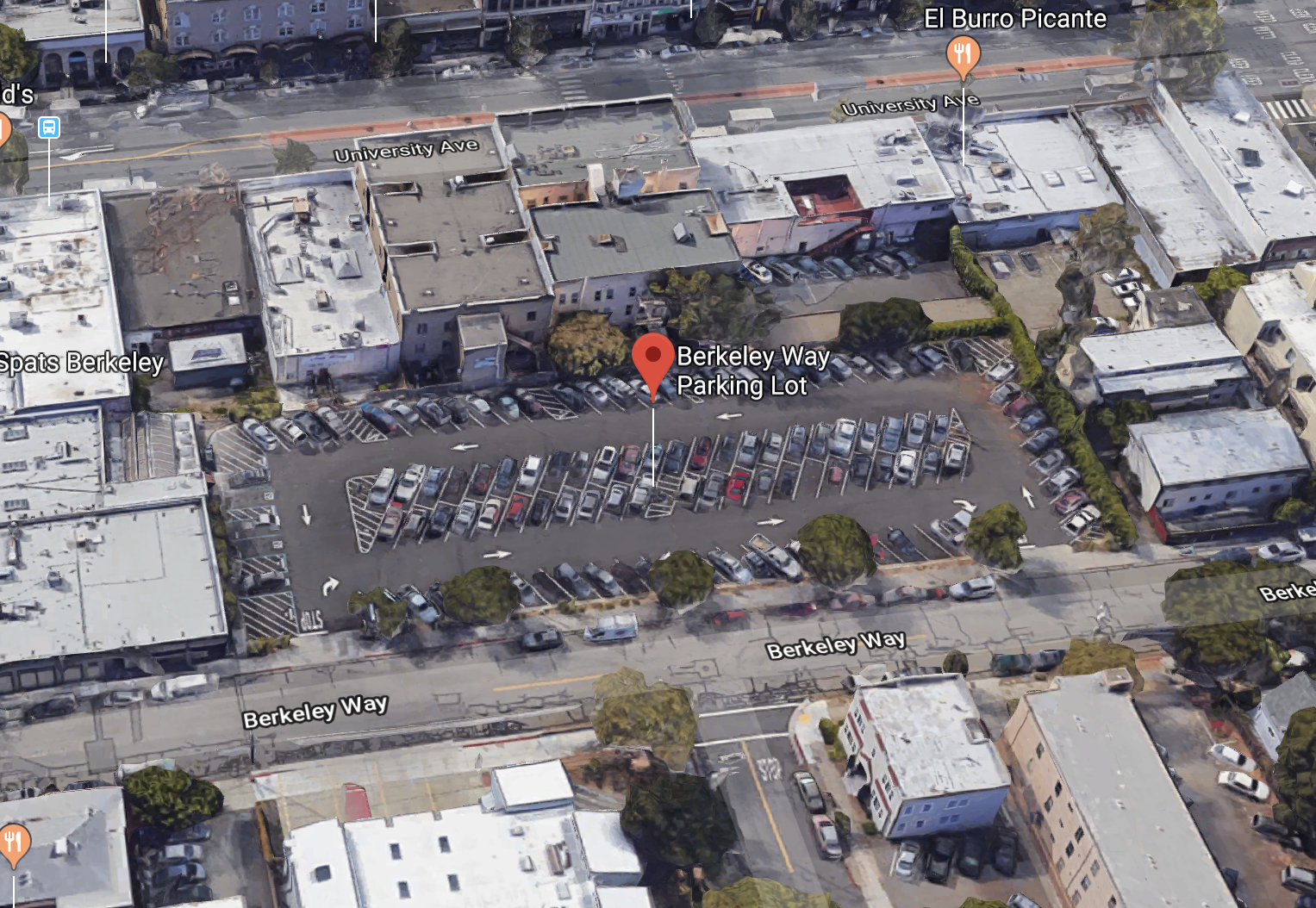 By Igor Tregub and Luis Amezcua
By Igor Tregub and Luis Amezcua
Putting underground parking below planned housing for the homeless in Berkeley is not only costly and short-sighted, but it will reduce the number of units that can be built.
At its March 13th meeting, the Berkeley City Council will discuss the Berkeley Way project — the city’s most ambitious development for affordable and supportive housing for the homeless since the David Brower Center. Last year, the City Council voted unanimously to prioritize the project and reserved a $3.1 million Housing Trust Fund allocation to help finance the project. Even with this projected infusion of funding, the project – which has been planned by the City Council for nearly five years – faces a $12– $15 million overall funding shortfall, according to the applicant.
Overall, the plan proposed by City of Berkeley staff to close this funding gap looks like a reasonable plan to finance this incredible project. But one significant hurdle remains, which pits 20th-century thinking about parking requirements against today’s acute need for permanently affordable housing, shelters, and supportive services. Namely, the city of Berkeley plans to replace the surface-level parking lot that will hold the complex with as many as two levels of subterranean parking. The stated goal of the city is that doing so would recapture “$800,000 in revenue annually that goes into the city’s parking fund.”
The Sierra Club is concerned that introducing this amount of parking would lead to a reduction in below-market-rate units on this site at best and render the project cost-infeasible at worst. It would be contrary to the mission of a walkable, bicycle-friendly, and transit-accessible Downtown. The project, a few blocks away from the Downtown Berkeley BART station and numerous AC Transit bus stops, is within a Priority Development Area — a designation that encourages local communities to provide benefits such as housing at all income levels, transit access and amenities, and open space.
The development of transit-oriented housing is one of the most effective strategies to reduce greenhouse gas emissions — particularly those associated with transportation from single-occupancy vehicles. At a City Council work session on December 7, 2017 regarding the Climate Action Plan, the City reported that “transportation is the largest source of community-wide emissions, and modeled data shows a slight increase of 5% from 2000 to 2015,” resulting in transportation accounting for 56% of the city’s greenhouse gas emissions. The city has laid out a variety of strategies to achieve 80% greenhouse gas reductions by 2050, which includes reducing petroleum use by 75% and “vehicle miles traveled by focusing growth along transit corridors, smart parking policies, and increasing access to less-polluting travel modes, such as biking, walking, and public transit.”
Berkeley cannot meet its greenhouse gas emission goals without putting the strategies it has identified into practice. We are sympathetic to the concerns of some Downtown Berkeley merchants, but believe that the entire nature of parking and transportation will soon change. If the viability of this project is sacrificed in support of parking, we just may be stuck with an underutilized subterranean parking lot that is extremely difficult to convert to a more needed use. In the interim, the Center Street garage, three short blocks away, will create about 400 more parking spaces than used to be there previously – which will more than account for any parking reduction at Berkeley Way.
At the conclusion of the previous meeting at which the Berkeley Way project was discussed, and thanks to broad support from the Sierra Club and other organizations, the City Council took one very important step: unanimously voting to have city staff study the following issues:
The effect of including parking in the project on competitiveness of securing cap-and-trade funds
The time and cost to redesign the project under each parking scenario, including a zero-parking scenario
An analysis of cost implications for each parking scenario, and potential sources of funds if parking revenue falls short
Building height options and construction type
In March we will ask the City Council to build upon this vote. The Sierra Club strongly supports building an affordable and transitional housing project with supportive services at the Berkeley Way site in the face of an unprecedented housing affordability and homelessness crisis facing our Berkeley community. We urge the City Council to prioritize housing over parking in order to ensure this critical and much-needed project is financially feasible and moves forward as quickly as possible. Please contact the City Council at council@cityofberkeley.info with your thoughts on this item by Tuesday, March 13 at 2 pm.
Igor Tregub is the chair of the Sierra Club San Francisco Bay Chapter. Luis Amezcua is the chair of the Sierra Club Northern Alameda County Group.
Image: The parking lot on Berkeley Way that's the site of the proposed project.
Editor’s Note: A version of this article appeared in Berkeleyside on January 29, 2018.